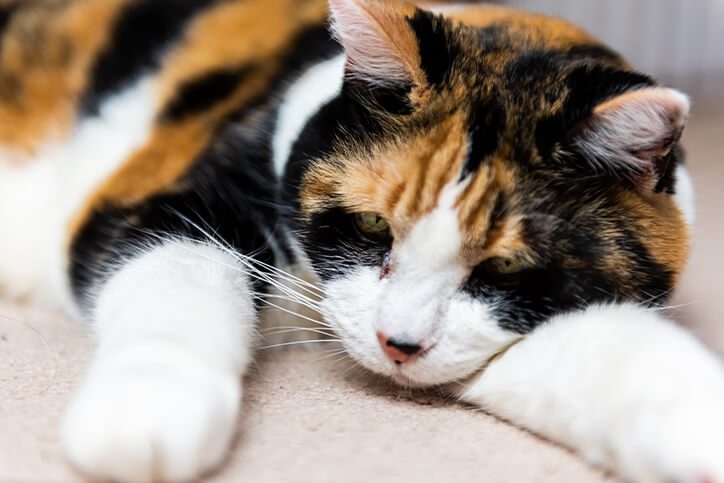How to Tell If a Kitten is Dehydrated?
Dehydrated kittens require fluids and prompt veterinary attention. A veterinarian will conduct an initial thorough exam in order to identify and address the cause of dehydration as well as treat any associated medical issues.
Skin tenting (or turgor) testing can provide an at-home way of testing whether a kitten is adequately hydrated. Gently pinch between her shoulder blades to form a tent; if it quickly returns back to its normal state, it’s a sure sign they are well hydrated.
Skin Tenting Test
Cats are carnivores and it is part of their DNA to receive most of their water through food consumption, but this may cause dehydration due to insufficient liquid intake.
Make sure your kitten is properly hydrated by conducting a simple skin test. Simply pinch between their shoulders blades and release; if their skin snaps back into place quickly, they are well hydrated; otherwise it is an indicator that their elasticity may have decreased due to dehydration.
Examining their gums can also provide clues as to their hydration level; dry, tacky gums or sticky mouth can also be indicators of dehydration in cats. Furthermore, hard and dry stool could indicate dehydration as well.
If you suspect your kitten is dehydrated, it is extremely important that they visit a veterinarian immediately as they will be able to evaluate how severe their dehydration is, determine its underlying cause and offer appropriate treatments such as subcutaneous and intravenous fluid therapy in their clinic for more severe cases. Hydration at home (for mild cases) and subcutaneous and intravenous fluid therapy in their clinic could provide necessary relief.
Gums
The tenting test is an effective and straightforward way to gauge a kitten’s level of dehydration. Simply gently grab some skin around his or her shoulders, pull up to form an inverted tent shape, release, and allow it to return into place once freed; in healthy cats this should happen easily; otherwise it could take seconds or remain tentlike, signifying poor skin elasticity or dehydration.
Dehydration symptoms in kittens include dry and brittle fur as well as decreased appetite due to stress or illness. Furthermore, your cat may visit their litterbox less often than normal as this could indicate constipation caused by dehydration.
When the gums of a kitten feel dry and tacky to the touch, this is another clear indicator that they need more water. Although dehydration may make drinking enough water difficult for cats, you can help them to consume enough fluids by offering some ice cubes in their bowl or adding small amounts of chicken broth or wet food to their daily food routine.
If your kitten shows any of these symptoms, contact either their foster coordinator or veterinarian immediately for treatment plans to address dehydration. Treatment may include giving fluids at home or subcutaneous fluid injections at the vet clinic.
Eyes
Dehydrated cats can lose the sparkling eyes that have come to be so beloved by us humans, becoming dull instead. Very thin cats, older ones or those suffering from health conditions are more prone to have sunken eyes; however, dehydration in any cat could lead to serious consequences if left untreated early enough.
If your cat appears lethargic and lacks energy, rejecting its favourite treats (especially CIAO Grilled Tuna!), this could be a telltale sign of dehydration. Loss of appetite could be related to blood flow being cut off to their digestive tract as a result. Panting may also indicate dehydration but could also indicate overheating, pain or another health concern.
Cats can be finicky drinkers, making it hard to tell whether or not they are getting enough water. One effective strategy to ensure a kitty stays hydrated is making sure there is fresh water readily available and cleaning their bowl on a regular basis; another key strategy is keeping an eye out for any changes in behavior or appearance and consulting your vet if necessary.
Urination
Dehydration causes cats’ bodies to lose water without replacing it as expected, leading to dark or smelly urine production and ultimately an inability to urinate normally. Dehydration symptoms in cats include inability to urinate normally.
All cats continuously lose fluids throughout the day, with much being lost through urine output. Therefore, their bodies need to replace this lost moisture through drinking or eating and in sufficient amounts; otherwise problems arise if not enough fluids are being consumed.
If your kitten exhibits any of these symptoms, it’s essential that they see their vet immediately for intravenous fluid therapy or subcutaneous fluid administration if necessary. They will be able to assess how severe their dehydration is as well as determine its source – be it stress or illness – in order to provide appropriate treatments and provide care plans accordingly.
As another way of encouraging your kitten to drink more water, try offering them some broth in their food bowl containing less salt; too much sodium could make ingestion difficult for your kitten and lead them off track from drinking its own freshwater supply. This may help them get back on track without going overboard.







